#abstract flourishes and shapes
Explore tagged Tumblr posts
Text
꣑ৎ just art baby
drawing on paige's arms . sexual tension. teasing.


you and paige were slouched on the couch, limbs sprawled in that comfortable, lazy way that only comes from spending hours together with no agenda.
her long arm draped over the back of the couch, fingers occasionally brushing the edge of your shoulder, while her other hand rested on your lap, her thumb tracing slow, soothing circles on your skin.
you were focused, marker in hand, doodling intricate patterns on her forearm, her muscles flexing slightly under your touch as she shifted.
paige’s eyes flicked between your concentrated expression and the ink taking shape on her skin. “that better be good,” she muttered, her voice low and teasing.
her eyes sparkled with mischief, always ready to challenge, you glanced up, meeting her gaze with a cocky smirk of your own. “oh, please, don’t freak out when i'm done,” you shot back, pressing the marker a little harder to emphasize a line.
“you’re lucky I’m even doing this for free.” paige clicked her tongue, tilting her head back against the couch, her blonde ponytail spilling over the cushion. “you sure you’re not just turning me into a middle school notebook?” she teased, her voice dripping with mock concern as she raised an eyebrow.
you rolled your eyes, focusing back on the swirling design you were etching into her skin. “i’m just fixing your boring vibe, bueckers,” you said mimicking her playful tone. “gotta make you look less like a plain jock and more like a work of art.”
she chuckled, the sound deep and warm, her body shaking slightly under your hand. “oh, really? or you’re just looking for an excuse to touch me?” Her thumb paused its circling on your lap, giving your thigh a light squeeze for emphasis.
“admit it, you’re obsessed with these guns.” she flexed her arm subtly, making the muscle pop under your marker, you rolled your eyes again, harder this time, fighting a grin.
“oh, please, don’t flatter yourself. i’m just trying to save you from being basic.” you added a flourish to the design, a mix of bold lines and playful curves that screamed you but still matched her vibe.
you leaned back on the couch, stretching your arms dramatically. “there, done,” you announced, whistling low as you eyed the finished design a sleek mix of geometric shapes and abstract swirls that wrapped around her forearm like a temporary tattoo.
“you’re gonna have to wash this off before your gym sesh.” you smirked, leaning closer to her. “unless you wanna flex my art for your bros.”

© written by kaizer | do not copy plagiarize or translate any.
#꣑ৎ p. bueckers ── written by kai#paige#paige x reader#paige bueckers#paige bueckers fic#paige bueckers imagine#paige bueckers x reader#paige buckets#wbb#wnba x reader
674 notes
·
View notes
Text
At nineteen, Emmrich proposed to a fellow student, a boy with hair so dark it drank the light. The age itself was incidental; a number, an illusion, a neat division imposed upon a life that did not yet know how to divide itself. But still, nineteen was good. Good because it allowed for certainty, for decisions made with the heedless bravado of someone who has not yet learned how time can warp them.
He remembered family in the way one remembers the texture of a childhood blanket: warmth not as an abstraction but as a sensation, something real enough to be retrieved at will, kneaded, reshaped, pressed into new forms. It was this warmth, this phantom of closeness, that he sought to recreate in the tender spaces of early love. No one stopped him. Nineteen was the age of indulgence, of watching without intervening, of murmured allowances. Let him. He will learn. He will unlearn. The world granted him this folly.
"Let’s wait until we’re no longer apprentices," the lovely boy said, and so they did.
Then Minrathous for one, Ferelden for the other. Cities that, on maps, seemed no more distant than the span of a hand but, in practice, required whole journeys to cross. The change was slow. Small gaps in the correspondence, a hesitation in the ink, an unfamiliar concision where once there had been excess.
The letters continued. At first, swollen with sentiment, words pressing against the margins, impatient, tumbling over themselves in their need to be read. Then, the same flourishes, the same intricate loops, but now with the care of one writing an alibi. The words became beautiful in a way that beauty becomes a substitute for feeling. Then, in the end, not at all.
At thirty, he tried again, though this time without the formalities of a question. A gesture here, a remark left to linger, an invitation just vague enough to be ignored or accepted without consequence. The art was in the waiting: nets cast, lines slack, the delicate balance between reeling in and letting the current decide.
Gifts, unobtrusive at first, then a shade too particular, too attuned. Plans, not for next week but for some fogged-over point just far enough ahead to suggest permanence. A quiet test, a way of observing whether the word we would slip into conversation naturally or require a pause, a conscious effort.
Some entanglements stretched across years, some unraveled in mere months, some never took shape at all. But the process remained the same, a practiced routine, less an act of pursuit than a habit of expectancy, of waiting to see who would mistake the drift for direction.
With Johanna, it had almost seemed possible. They were young, clever, bright enough to blind themselves. Where she rushed forward, he held back; where she burned bridges, he traced blueprints for new ones. They fit together, he thought. She chose him to fight with, to kiss, to mock, to fuck, to abandon, to retrieve, to champion when it suited her and dismiss when it did not. Out of all the others—so many others, so many better ones—it was him she turned to, and that was beyond exhilarating.
"You're a fucking idiot," she would tell him.
"Perhaps," he would agree, adjusting his sleeves, "but you still should not do this, Johanna." Or that. Or the next thing.
They did not balance each other. Balance suggested symmetry, some reciprocal give-and-take. Johanna was a force of nature; he, at best, a gust of wind. But in those days, he let himself believe they came close enough.
"I could stay with you forever," he confessed to her once, drunk on sentiment, on whatever else had been in his glass.
"Love. Romance," Johanna muttered, barely looking up from her notes. "Convenient, isn’t it? Always there when it suits you. Always such a lovely little supplement to whatever grand, important thing you’re doing. We could go anywhere, you and I. Climb every ladder, scale every rung. Publish together, argue in print, scandalize conferences, carve our names so deep into the spine of academia they’d have to chisel us out. For a while, it could even be fun."
Tap-tap-tap. Her cigarette met its end against his desk.
"And then, of-fucking-course, you'll be wanting more. Because you're a sentimental twat. It'll start with something small. A home, maybe. A study with matching desks. How adorable. Before I know it, I’ll be spending more time with you than without, and suddenly ‘we’ have ‘traditions.’ ‘We’ have ‘a life together.’ And the next thing out of your mouth will be that cursed, saccharine stupid word: family."
A wave of the hand, cutting off whatever nonsense he had been about to say.
"Tell me, Volkarin, when that moment comes, when the great balancing act begins, who do you think will tip the scales? Who will step back? Who will compromise, just a bit, just a fraction, just enough that it becomes a habit? It certainly won’t be you."
In the aftermath, he stopped collecting people—they had a way of slipping through, of vanishing between seasons—and turned to objects instead. Objects had the decency to remain where they were placed. Objects, too, could be tender. A frayed ribbon, a cufflink left behind in a hurry, the curve of a wine glass still faintly smudged. If flowers could be pressed between pages, why not the remnants of former closeness?
For a while, it sufficed. Once-beens do not grow cold. They do not tire of a familiar voice. They do not wake to discover that passion has gone.
Then, one day, sudden as a fairytale, a little thing followed. A little thing made entirely of curiosity, of unguarded wonder. It assembled itself from air and light, slipped into its chosen shape, donned a backpack, adjusted its goggles, and, most importantly, selected him. It let itself be named. It let itself become. First an it, then a he, then a wisp no longer but This is Manfred. And once again, he thought: this is enough. More than enough. Did he really need more? Did he really dare ask for it? To ask was to tempt, and he had lived long enough to know that nothing is punished more swiftly than wanting.
It is a graveyard, he thinks now, standing in the Lighthouse, frowning at the accumulated debris of a life, at the weight of what he has chosen to drag with him. The artifacts of his years; the trifles, the curiosities gathered not for use but for the fact of their gathering. Books he cherishes and books he detests, bought because, once, someone he desired mentioned them in passing. His grave gold has been carefully curated. Each piece first chosen for its shape and luster, its particular delight, but also bright enough, costly enough, to be seen. Gold so pure it warps under a careless grip, so soft that teeth would leave crescent-shaped wounds in its surface if one were to bite.
He wonders if Rook—whom he loves, though he will not tell her, not yet, not when love, spoken too soon, has the peculiar effect of making things disappear—might find some use for them. If she would accept one without knowing it was an offering. If she would take a second. If she would take them all. Books she cannot read, books she can set alight. If the gesture would amuse her, if it would tilt her just a hair closer, if, in some small, unnoticed way, it would make her stay after all is said and done and the gods are dead.
He is vain, naturally. If the wind disarranges his hair, he will pause before a reflective surface to smooth it down. He will scent the pulse points of his throat, darken his lashes, adjust the folds of his collar. But vanity, like intelligence, like charm, is an instrument. He has wielded it since youth, when prettiness earned him gifts, indulgences, the interest of those old enough to give what he could not take. In his prime, handsomeness made students linger too long at his desk, made colleagues tilt their heads toward his in the candlelit hush of evening. And now, past fifty, he is something else altogether.
Now he looks like a man who can provide. It is a new sort of attention, neither unpleasant nor pleasurable, merely a shift in expectation. He can no longer offer the prettiness of youth—fine, let it go. But there are other currencies. Stability, for one. A steady hand, a still point, a place to land when Rook, inevitably, falls. Because she will fall. It is in her nature to leap, just as it is in his to remain still, just as it was in Johanna’s to trespass.
He is tired. Not old, not yet, though the distinction is beginning to blur. A little past his prime, a few paces beyond what once felt limitless. Still, the weight of it settles; a fatigue not of the body but of anticipation, of wanting, of that feverish, grasping giddiness that used to propel him forward and now only leaves him breathless. He isn’t sure when it happened, when the thrill sharpened into something sweeter, something he dared to call love.
All he knows is that the Lighthouse has no hours, no division between night and day, only the endless lull of the in-between. And that in this strange, untethered time, he would very much like to kiss Rook for every second of it.
"You look very good there," she says, watching him rearrange his books.
Another night, when a tome slips, edges itself beneath his desk, and he is forced onto hands and knees to fish it out, she remarks, "I don’t like reading, but I like it when you read to me."
"I like this, and I like that, and I like this even more." Her voice is drowsy as she traces the lines of his face in the dark. He doesn’t know what this or that are, only that she is saying it, only that it undoes something in him. He turns his face slightly, breathes in, and without meaning to, without even noticing at first, he cries.
"Oh," she says, and then, "Hm." A pause. A brief assessment. Finally, a careless shrug. "It’s fine. That’s fine. I like this too."
Rook, Rook, Rook, he wants to say, you don’t need Rivain, you don’t need the sun. The sun burns you, always has, always will; your skin is too pale for it, you freckle, you scald. But Nevarra—
Nevarra is softer. Nevarra has clouds, long grey stretches of them, merciful and cool. Nevarra has catacombs and tombs, stone corridors humming with history, names carved so deep they outlast memory. And everywhere—flowers. Tangled over crypts, spilling down staircases, curling at the hinges of forgotten doors. He has seen them all. He's collected them, commissioned their likeness in ink, dried them between pages so they would keep, so he could say: look, here, this one, still perfect, still intact. You don’t need the sun because they don't either.
He feels selfish, but after all this time, surely, he is allowed. He is not certain if this is the love, grand and operatic, but it has the right proportions, the right density.
Then let him be selfish. Because one way or another, he will go before her. She is young; he is not. He will leave her everything—what he has made, what they will make together—let her wade through the excess of it, scatter it, burn it, gild herself in its remnants. Or perhaps it will be the other way around. Perhaps she will die first, and he will remain, the eternal, patient custodian of the Necropolis, throat slit in the name of lichdom.
He will visit her bones, speak to her as he speaks to his parents, his voice flattening against stone, words meant for no one but himself. He will not whisper. Not to her. Not the way he does to the others, not in the hush reserved for the dead. Because what if she does not answer? Worse—what if she cannot? What if there is nothing at all on the other side, just a severance so complete that every Rook-shaped, Rook-possessed, Rook-claimed thing is erased, like a hand wiping chalk from a slate? And he, undying, would remain to witness it. So no, he will not whisper. But he will talk.
He wants it, but he doesn’t want it, because he wants too much, all at once, all overlapping, all pulling in different directions. He wants to live, but he does not want to die. He wants to live with Rook, wants to kiss her, undress her, drag her down onto the floor of the Lighthouse, press her against familiar sheets in Nevarra, in Rivain, in places they have never been, in places that do not yet exist. He wants to pull her so close that the seam between them dissolves.
More than that, he wants to buy her grave gold, not just because she would relish it—because she is a dragon, a creature drawn to glittering things—but because when she wears it, when her wrists flash with bangles, when her ears are burdened with gold, when her fingers are swallowed in rings, people will see. They will see and know. Know that every piece was placed there, deliberately, by someone who cares for her in the way that gold cares for fire—devotedly, completely, until it melts.
"I love you so much," he tells her one night, after a sip of whiskey too many, after something in his chest has tipped over and spilled. "I love you so, so much, and perhaps, oh, just perhaps, we do not need to die."
She kisses his cheek, absently. She looks tired. "Not now?" she asks.
"Not ever," he insists, giddy again, grasping her hands, pressing his lips against her knuckles.
She exhales, leans back, undoes her braid, fingers brushing through. Inquires again, "How?" Not with disbelief, but with that particular indulgence she reserves for him. She humors, but she listens. She likes to listen. And so he will talk.
"Me, in lichdom. You... I do not know. Not yet. Not entirely. But I will. Through artifice, perhaps."
"Artifice?"
"You like gold, do you not?"
"I suppose."
"Then gold it shall be," he concedes. "Fed into your veins, threaded through capillaries, chaperoned along the corridors of your body. A patient infusion, drop by drop, until the filigree of your arteries is lined with metal, until the marrow of your bones drinks it in like water. When your heart beats—" he presses his fingers to the pulse at her wrist, measuring it, counting. "It will push gold through you, coil it around your sinew, stain your blood the color of amber. It will settle in the soft places, the hidden ones. Behind your ribs, along your spine, between the cords of your throat. You will be a reliquary, a thing preserved, untouchable." His grip tightens slightly, just for a moment, before he releases her, watching the light catch at the faint blue of her veins. "And if your skin were ever cut," he murmurs, "nothing would spill. No ruin, no red, no proof of mortality. Only the gleam of permanence seeping through."
Rook watches him for a long time, long enough that she seems older, the angles of her face sharpened by something he cannot name. Then he blinks, and suddenly she is younger; too young, younger than memory allows, younger than she has ever been. Paler, too.
She takes his glass, finishes it without hesitation, grimaces slightly. Still wordless, she cradles his face in her hands, presses a kiss to one cheek, then the other. Her lips brush his eyelids, and he closes them for her, yielding. She lingers there, warm and silent, mouth against the thin skin, long enough that the room begins to shift, long enough that he thinks, drowsily, that he might simply drift into sleep.
"I love you too," she murmurs, very quietly. Then, softer still, her lips moving against his temple, "But don’t speak like that again." Another kiss, this time to his jaw. "I will come to the Necropolis with you, if you like. In the next few days. You are not doomed, nor transcendent, nor anything half so tragic. You are homesick. That is all. You are simply homesick."
He knows himself to be a man of excess: of reaching too far, of wanting beyond reason, of pressing his hands too deeply into whatever is offered. That was why the others left, wasn’t it? But Rook, Rook is different. Rook takes. Rook wants. Rook gives, recklessly, and he, in turn, cannot help but take.
Bad jests, confessions that start careful and end careless. A first time beneath the covers, blood on the sheets, a kiss, the way her mouth moves against his, the way she lets herself be known in increments, in silences, in the cool of her palm against his cheek. Her favorite spot behind the waterfall. Because love, if it is anything at all, is the act of giving. Not just anything, not just for the sake of it, but precisely what the other cannot reach for themselves.
And so, he wants to give her gold.
In the morning, he will apologize. Will run a hand over his face, will mutter something about whiskey, about tiredness, about speaking without thinking. He will dismiss himself before she can. Will say that he does not know what possessed him.
But tonight, he will think of her throat gleaming with gold. He will dream, as he always does, in metal.
#this was supposed to be part of herbarium but i ended up rewriting it#and this version has just been sitting in my folder#might as well make it a oneshot#nothing grand just my purple prose-y ass being purple lmfao#emmrich volkarin#emmrich x rook#emmrook#rook x emmrich#emmrich dragon age#datv#emmrich the necromancer#emmrich romance#my stupid writing#shortstories
316 notes
·
View notes
Text
character ; shidou ryusei || wc ; 690 a/n ; just something i conjured during my lunch break, sorry for any errors!
it wasn't uncommon for artist!shidou to sometimes use you as a reference whenever he was conjuring his latest piece, often finding ease in working with your body than others. you're a long-term friend of his that has seen his creations even before he gained a spotlight from art curators all over the nation and you've seen how his creativity has exponentially flourished through the years. he had gone from a starving artist to being showcased in acclaimed museums and art exhibits in just a few years time and you couldn't be more proud of him.
he likes to use you as a real-life dummy, telling you to come over to his studio so position your body as he pleases. sometimes you'd get stiff and he'd yell at you, frustrated, but you'd turn your nose up and tell him to behave or else you'll leave. that usually puts him back into his place.
he's built his reputation for being rather... eccentric... when he's not calmly creating, so you suppose it just helps his persona image to gain more attention from the public. you blame it on the one showcasing where he was extremely upset that his manager insisted he displayed a certain sculpture he wasn't content with, and ended up completely destroying it amidst the showcase in front of hundreds of people to prove a point.
"here's to the shitheads that think they know art better than the artists themselves," he had heaved, a smirk being thrown at the camera that was showcasing the entire thing live. "i decide what is art. not you."
he's been drawing blanks for awhile now and calls you to come over to his studio after work and you see him preparing a large slab of clay.
"sit," he says, not looking back at you and juts his head to a nearby stool.
"what sort of pose do you need me to do this time?" you ask with a sigh, heaving your workbag down and preparing your limbs to position themselves into whatever awkward position shidou wants.
"nah, nothing of that sort," he shakes his head, "you just gotta sit there and look pretty, doll."
"huh?" you're flabbergasted. you might actually leave the studio without a weird pain in your arms for the first time.
"i'm practicing realism," he says simply. "obviously can't use a flat picture, can't get all the right shadows and angles. so i need a 3d reference."
it struck you as odd shidou was known for his absurd, abstract pieces that seem to defy all the lines that contemporary art has ironically restricted upon itself. his pieces were nothing less of eye-catching, his sculptures often being made out of whatever material shidou could get his hands on, his paintings lively with color and shapes and texture.
but you don't question it any further and sit yourself down in front of him. he goes to touch your face a few times to just analyze its angles and highlights, but the closeness of him making heat rise on your face. he gets to work eventually, starting with your head. and he asks you to come to his studio for a solid week or so, just simply working on nothing else except creating an insanely realistic replica of your face from the slab of clay. you've never seen him so concentrated before on an art piece.
on the last day, where the final touchups have been sealed, you bid him goodbye in the late evening, as he's just cleaning up some minor details. just before you enter your car, however, you groan and realize you had forgotten your phone in his studio and trail back into the building.
when you approach door, however, you peer silently inside just to make sure he's in there and he is.
but he's still, staring at the sculpture at your calm face rather quietly... intently. you open your mouth to say something to alert him you were here to pick up your phone, but words falter when shidou cups your sculpture's face and places his lips on the sculpture's own pair, cold clay lips meeting the warmth of his.
#there's a small free access museum across where the building for my internship and i went there yesterday after work#then i remembered that shidou likes art from the egoist bible so my mind came up with this idk#blue lock#bllk#blue lock x reader#shidou ryusei#shidou#shidou ryusei x reader#shidou x reader#shidou x you#shidou ryusei x you#blue lock ; shidou ryusei
115 notes
·
View notes
Text
No-paywall version.
"You can never really see the future, only imagine it, then try to make sense of the new world when it arrives.
Just a few years ago, climate projections for this century looked quite apocalyptic, with most scientists warning that continuing “business as usual” would bring the world four or even five degrees Celsius of warming — a change disruptive enough to call forth not only predictions of food crises and heat stress, state conflict and economic strife, but, from some corners, warnings of civilizational collapse and even a sort of human endgame. (Perhaps you’ve had nightmares about each of these and seen premonitions of them in your newsfeed.)
Now, with the world already 1.2 degrees hotter, scientists believe that warming this century will most likely fall between two or three degrees. (A United Nations report released this week ahead of the COP27 climate conference in Sharm el Sheikh, Egypt, confirmed that range.) A little lower is possible, with much more concerted action; a little higher, too, with slower action and bad climate luck. Those numbers may sound abstract, but what they suggest is this: Thanks to astonishing declines in the price of renewables, a truly global political mobilization, a clearer picture of the energy future and serious policy focus from world leaders,
we have cut expected warming almost in half in just five years.
...Conventional wisdom has dictated that meeting the most ambitious goals of the Paris agreement by limiting warming to 1.5 degrees could allow for some continuing normal, but failing to take rapid action on emissions, and allowing warming above three or even four degrees, spelled doom.
Neither of those futures looks all that likely now, with the most terrifying predictions made improbable by decarbonization and the most hopeful ones practically foreclosed by tragic delay. The window of possible climate futures is narrowing, and as a result, we are getting a clearer sense of what’s to come: a new world, full of disruption but also billions of people, well past climate normal and yet mercifully short of true climate apocalypse.
Over the last several months, I’ve had dozens of conversations — with climate scientists and economists and policymakers, advocates and activists and novelists and philosophers — about that new world and the ways we might conceptualize it. Perhaps the most capacious and galvanizing account is one I heard from Kate Marvel of NASA, a lead chapter author on the fifth National Climate Assessment: “The world will be what we make it.” Personally, I find myself returning to three sets of guideposts, which help map the landscape of possibility.
First, worst-case temperature scenarios that recently seemed plausible now look much less so, which is inarguably good news and, in a time of climate panic and despair, a truly underappreciated sign of genuine and world-shaping progress...
[I cut number two for being focused on negatives. This is a reasons for hope blog.]
Third, humanity retains an enormous amount of control — over just how hot it will get and how much we will do to protect one another through those assaults and disruptions. Acknowledging that truly apocalyptic warming now looks considerably less likely than it did just a few years ago pulls the future out of the realm of myth and returns it to the plane of history: contested, combative, combining suffering and flourishing — though not in equal measure for every group...
“We live in a terrible world, and we live in a wonderful world,” Marvel says. “It’s a terrible world that’s more than a degree Celsius warmer. But also a wonderful world in which we have so many ways to generate electricity that are cheaper and more cost-effective and easier to deploy than I would’ve ever imagined. People are writing credible papers in scientific journals making the case that switching rapidly to renewable energy isn’t a net cost; it will be a net financial benefit,” she says with a head-shake of near-disbelief. “If you had told me five years ago that that would be the case, I would’ve thought, wow, that’s a miracle.”"
-via The New York Times Magazine, October 26, 2022
#climate change#global warming#renewable energy#climate anxiety#climate crisis#humanity#green energy#green future#apocalypse#natural disasters#good news#hope#research#hope posting
2K notes
·
View notes
Photo

Mycenaean Art
The Mycenaean civilization flourished in the late Bronze Age from the 15th to the 13th century BCE, and their artists would continue the traditions passed on to them from Minoan Crete. Pottery, frescoes, and goldwork skillfully depicted scenes from nature, religion, hunting, and war. Developing new forms and styles, Mycenaean Art would prove to be more ambitious in scale and range of materials than Cretan art and, with its progression towards more and more abstract imagery, go on to influence later Greek art in the Archaic and Classical periods.
Inspirations
The Mycenaean civilization was based on mainland Greece but ideas and materials came via trading contacts with other cultures across the Mediterranean. Imported materials included gold, ivory (principally from the Syrian elephant), copper, and glass, while in the other direction went Mycenaean goods such as pottery to places as far afield as Egypt, Mesopotamia, the Levant, Anatolia, Sicily, and Cyprus.
In art as expressed in fresco, pottery, and jewellery, the earlier Minoan culture on Crete greatly influenced Mycenaean art. The Minoan love of natural forms and flowing design especially was adopted by Mycenaean artisans but with a tendency to more schematic and less life-like representation. This new style would become the dominant one throughout the Mediterranean. Geometric designs were popular, too, as were decorative motifs such as spirals and rosettes. Pottery shapes are much like the Minoan with the notable additions of the goblet and the alabastron (squat jar) with a definite preference for large jars. Terracotta figurines of animals and especially standing female figures were popular, as were small sculptures in ivory, carved stone vessels, and intricate gold jewellery. Frescoes depicted plants, griffins, lions, bull-leaping, battle scenes, warriors, chariots, figure-of-eight shields, and boar hunts, a particularly popular Mycenaean activity.
Continue reading...
100 notes
·
View notes
Text
Plave: Yapping bout graphic design
Whoever the designers of Plave's branding, overall album designs, and digital content are (not related to virtual interactive stuff), Luv u (your work, actually lol)
I'm a such a nerd when it's bout graphic design, i love it so much, and this came to me (the need to talk bout this), cause I saw the packaging for Eunho's birthday kit, the illustration of muhmo in a pixel style is so cutee, the overall design is so adorable, the little pixilated wolf, so nicee

In general I think they have a really clean aesthetic, i don't know how to explain it actually lol, but it's kinda fresh, at least if I compare it to what is common to see design-wise from where I'm from, and talking bout the niche. I think it's cool that every one of their albums and projects have a personality on their own. It always expresses it so well, even if the cover (or whatever it is) is more on the abstract side.
Honestly, something I love bout plave is the graphic work, but putting aside all the work for the virtual universe they live in lol, that is super cool too, but I don't know bout that lol. My favorites are they typographic works, they're good, and the designs are always so harmonious, the use of the resources to bring something according to the concept, and in a way innovative if we talk bout the niche.

Something that not nerds (or non designers), ignores sometimes, is the importance of the typography and the weight it has on the project, but that is actually its charm, if it's well used you don't notice, you just see a really nice overall finished product, and that's what I love about Plave's designs, always cohesive, united as a whole concept, and appealing to the expressive resources a font can give.
Ofc I have to admit that it's not only the typography itself, but the way they work with it too, changing its morphology, adding elements, mixing styles, giving qualities like continuity by the elements put along the words, and playing with stuff like the kerning and interline to create a better composition, more aesthetic but functional. And ofc, they have some good typographic arrangements, that it's so satisfying to watch haha, talking bout merch or the imagery they create to promote the merch or events lol.
Another thing I really like is the work on their logo. I'm not the greatest fan of changing part of the graphic identity, but I guess we are already used to it (the shape of the logo, i mean), so it's ok(?). And since the essence remains in the morphology, talking about the structure, the construction of the exterior keeps feeling familiar, maybe bc of the pragnanz help idk

We understand it's a P. It keeps the flourish at the left, in some instances more abstract than others, but it's there. And the design is always flowing naturally with the comeback's concept, so I don't complain about the constant change. Actually, I'm kinda expecting what's coming next.
So, talking bout design and everything, I know is a work of many, surely in a long period of time that a team gave it all to achive this results, and I think is really cool, probably stressful af but I think it's worth it, to me it shows a really nice graphic quality, even tho I don't love everything, I think their work is just amazing and I really want to recognize it, I just think they're neat.
I really felt like this while writing this post, and I'm sure there's a lot of things I would want to add later, but I need to stop. I know this is only interesting to me hehehe but I'm overjoyed tbh

39 notes
·
View notes
Text
Abstract Art
Gojo x reader Ft. 1st years Genre: Fluff Synopsis: Gojo tries painting and calls it "abstract art" A/N: I've been going through a block lately, so please feel free to drop any specific ideas or blurbs in my asks Masterlist
It was a lazy Saturday afternoon, and you were spending some quality time with Satoru Gojo, your unpredictable boyfriend. As you both lounged in the living room, he suddenly declared, "Hey, babe, I'm working on a masterpiece. You're going to love it." he made hand motions asking you to follow him.
Intrigued, you followed him to his makeshift art studio, a corner of the room scattered with paintbrushes, canvases, and tubes of vibrant colors. Gojo grinned mischievously, revealing a canvas covered with a mysterious white cloth.
"I present to you, my latest creation!" he exclaimed, pulling off the cloth with a dramatic flourish.
To your surprise, the masterpiece was... unconventional, to say the least. The colors clashed in wild patterns, there was no coordination, the shades made no sense and shapes seemed to defy any recognizable form. It was a chaotic mess.
Your eyes widened, and you couldn't help but burst into laughter. "Satoru, is this your idea of a masterpiece?"
He winked at you, unabashed. "Abstract art, my love. Only the chosen few can truly appreciate its beauty."
Just then, Yuji, Kugisaki, and Megumi walked in, drawn by the commotion. They took one look at the canvas and burst into laughter.
"What is this, Gojo sensei?" Yuji asked, pointing at the chaotic mess.
Gojo struck a pose, pretending to be deep in thought. "It's abstract art, my sweet little mochis. Only those with a refined taste can understand its profound meaning."
Kugisaki rolled her eyes. "Refined taste? More like a refined disaster!"
Megumi, usually reserved, couldn't contain his amusement. "I never knew chaos could be considered art."
You and the others continued to tease Gojo mercilessly, with each remark more playful than the last. Despite the initial embarrassment, Gojo took it all in stride, joining in the laughter.
As the banter continued, Gojo decided to embrace the teasing, declaring, "Well, only the truly enlightened can appreciate the genius behind this masterpiece."
The chaotic masterpiece proudly hung in your living room as per Gojo's request.
#jujutsu kaisen#jjk#gojo satoru#gojo#satoru gojo#jjk fanfic#jjk x reader#jjk gojo#jjk gojo x reader#jjk satoru#gojo fluff#satoru gojo x reader#satoru gojo fluff#gojo smut#gojo satoru smut#gojo satoru fanfic#gojo satoru x reader#gojo satoru fluff#gojo satoru x you#gojo x reader
168 notes
·
View notes
Text
ALRIIIIGHT NOW TO GO NUTS OVER ONE OF MY FAVORITE ROBLOX GAMES OF ALL TIME
Topic of the day: Star Glitcher
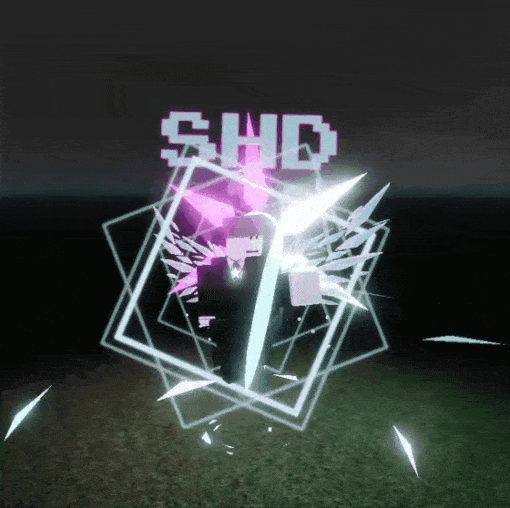
A few years ago, I ran into a game called Star Glitcher Revitalized. I went in thinking the premise was interesting, and at first I was pretty confused. But later on as I understood how the game worked, I was hooked. The gameplay along with fun bosses and mechanics made me come back for more, as well as grinding for skins!
In the older years of Roblox, there was a script that was created unintentionally. The script was originally meant for an Undertale battleground game, and it was a Chara build. The original scripter, Bird, wanted to model Chara's knife, but it ended up looking like a strange wedge. Bird then realized that, upon rotating it upsidedown, it looked like a bladed wing. After some tweaking, the script went from what was originally a Chara script, into a concept that flourished into its own independent game. Enter: Star Glitcher

As far as I know, the first iteration of Star Glitcher, formerly known as Spectrum Glitcher v1, was lost media, but overtime it evolved into newer versions, which unfortunately got leaked to the public when it shouldnt have. As a result, it briefly created a surplus of new Glitcher scripts which derive from Spectrum Glitcher. Colloquially, they were all known as Glitchers, but they soon were called Star Glitchers from the star design and concept. The one that was most popular at the time were later versions of Spectrum Glitcher, as well as some others, though some of which have faced controversy due to explicit nature.
Later on, Roblox began to push out a wave of anti-exploit measures, essentially killing off many scripts and their functionality. From here, the script went from being an individual script into its own original game. The popular one at this time was called Star Glitcher: Filter Enabled (SG:FE). This was where the concept of Star Glitcher began to grow and become its own independent title, garnering new fans and scripters that wanted to join in. After a couple years, the game was finally revamped into a proper, modern game, now known as Star Glitcher Revitalized (SGR), thus bringing us to todays version of Star Glitcher, alongside other variations!

So what is Star Glitcher Revitalized exactly? SGR is a game where the user is granted a small star on their chest, and wedge-shaped wings that flap behind the user along with a ring at the center. The main gimmick of Star Glitcher is that you can switch into different modes, each of which have their own unique name, colors, designs, and movesets. The modes are accessed through keybinds, which enables quick transformations into different modes for different outcomes. This act of switching modes is known as "glitching", hence the name of the script. Not only are there modes, but each mode has their own submode, which enables even more transformations to be discovered. To make things even cooler, there are modes that lead you to sides. Sides are essentially new extra modes to access, sometimes with their own unique gimmicks and abilities. This makes strategizing and synergizing really fun as you have a BUNCH of sides to go through. To this day there are modes that get updated and sides that get added, each with their own movesets, health, jump power, and speed!
What makes this even more exciting is the amount of bosses to fight against, as well as general PVP and testing out abilities in general! There is also a crafting mechanic where you can craft and ewuip chips, which essentially boost things such as your speed, damage, defense, etc.! This game adds such a unique flavor to general battleground games with the strategy of using certain modes, sides, and synergies to compete against bosses or others! The only thing is since the game is so abstract, it actually sometimes pushes people away which makes me so sad since the game is actually really entertaining and offers cool rewards such as new modes or skins. Then again the gameplay looks like this, BUT TRUST ITS SO MUCH FUN
CW // FLASHY
And the idea alone is so extremely flexible that its created so many badass Glitcher variations like.,. where do I even begin.,.

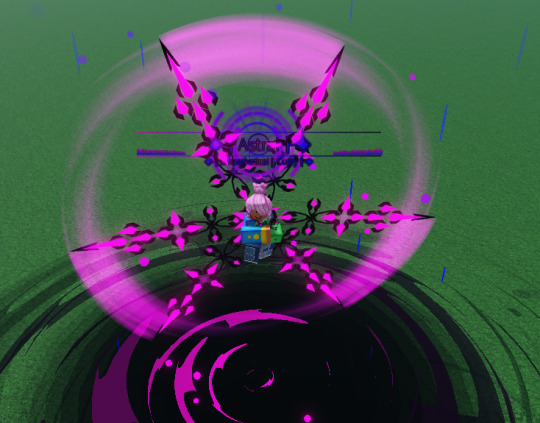
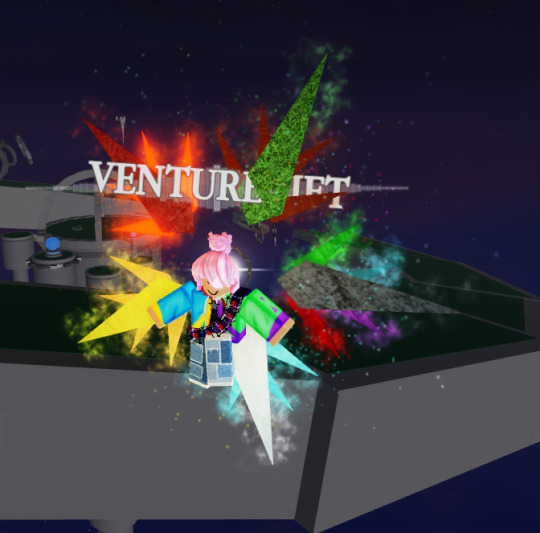
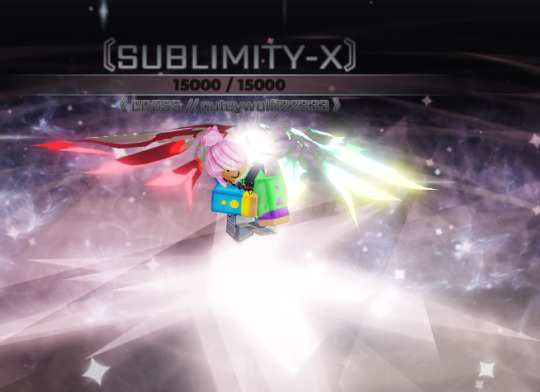
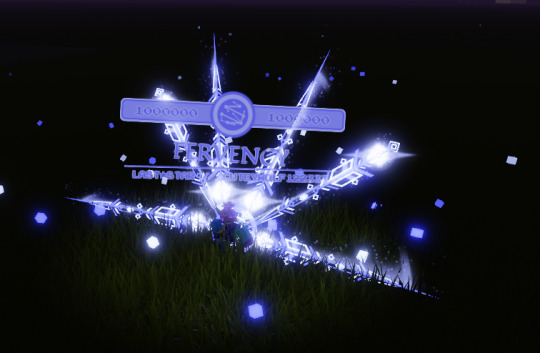
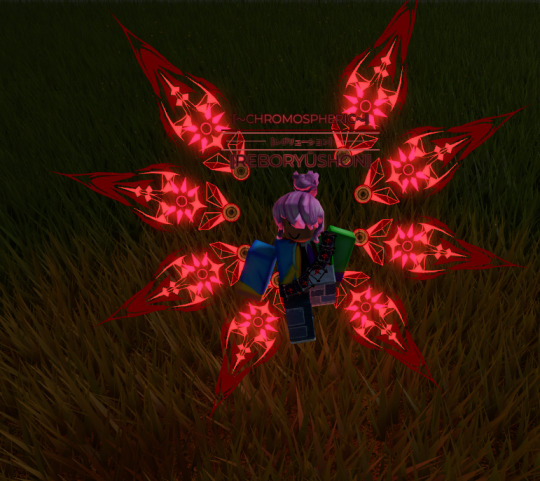
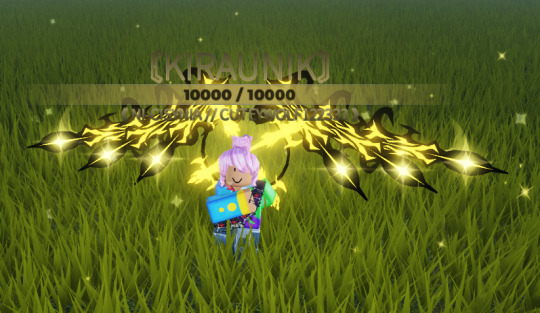
Like, seeing how much this concept has grown and transformed into other individual projects is so so so BADASS it genuinely makes me so happy with how creative this flexible idea has become! I genuinely wish more people came to appreciate this game and concept because it has so much effort put into it and it has a fun gameplay loop to get into
I justjRHRGAJRVAHGRE TLDR - Star Glitcher is one of the COOLEST games on Roblox PERIOD. And I say this as a Roblox vet from 2012‼️
#isarambles#roblox#star#glitcher#star glitcher#roblox star glitcher#star glitcher revitalized#robloxian#roblox game
23 notes
·
View notes
Note
Can you give your thoughts on the general character art design of Hades? It's always seemed kind of off to me and you seem to have good enough media opinions to put the reason why into words
i mean, first of all, i think that they suffer just from being The Greek Gods and therefore just having the most barebones basic designs that those archetypal characters get in pop culture. like look at zeus:
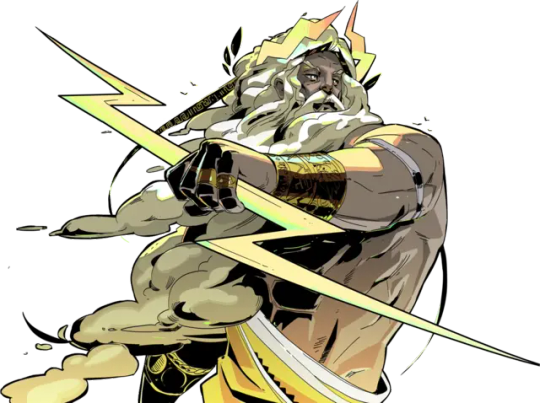
like. this is Zeus. there are some interesting flairs here with the lightning crown and cloud beard but like. It's Zeus. the visual language here is not communicating anything more interesting or unique or vivid than It's Zeus. contrast, like, rukey from pyre:
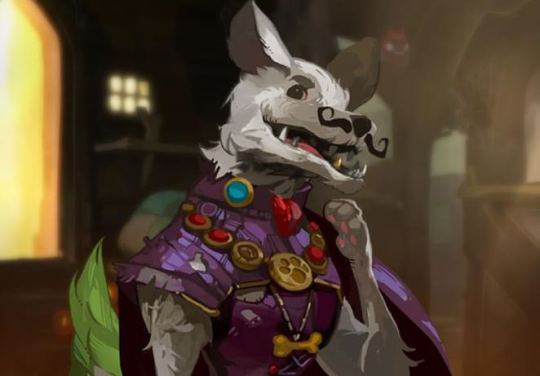
look at how much fucking personality is conveyed by this little freak. the fucking moustache! the fancy little cloak but the messy dog hair. the playful expression, the gold tooth, the glint of cunning in the eye, the raised little paw. you look, at this guy and get an immediate idea of what and who he is.
i also hate how 1. shrinkwrapped and 2. fucking grey and ashy every single character in hades is. like look at zeus's muscles up there this man is fucking dehydrated and like. why does athena look like this
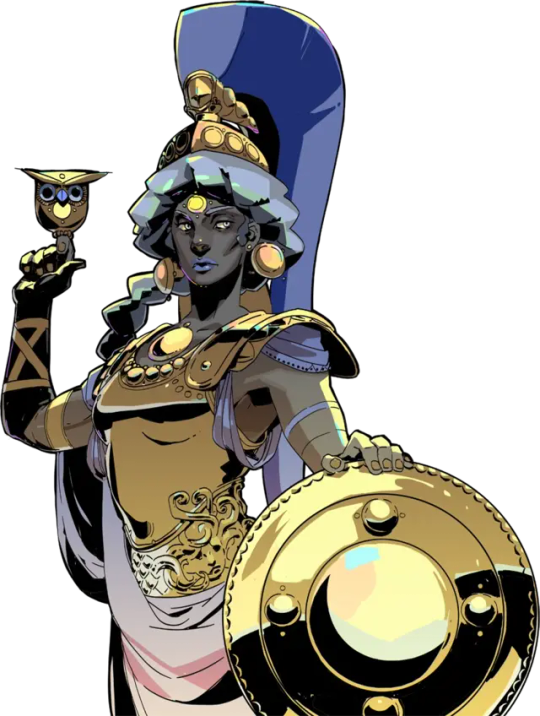
she is grey. she is so fucking grey. this is a vampire. this is a woman made of ash.
furthermore i find what they did with the greek gods wrt to making them a few different races to be a cowardly half-measure. like--the idea they forwarded in interviews that greek gods are 'global' and should represent the whole world are, quite frankly, just bullshit! i dislike this universalization of a mythology that is very very very tied to a particular culture and time and place because it is just another shape of the attempted universalization of the 'Western Canon', the removal of these things from historical place and context to make them abstract ideals that can be imposed upon the whole world because they 'transcend culture' while really they have just been incorporated into a dominant culture.
but, like, most frustratingly--there is a like huge wealth of cultural variety to be found in greco-roman myth. versions of these gods were worshipped in north africa and egypt and west asia and even as far as india. but, like, the commitment to multiethnicisim is purely surface-level, so they don't employ any of the iconography or look into these non-european syncretic depictions of these deities. they just take all their design cues from the tired pop-culture versions of purely greek aesthetics. imagine how fucking interesting the character designs for hades could have been if instead of making dionysus a person of colour and calling it a day, they represented a specifically indo-greek dionysus!
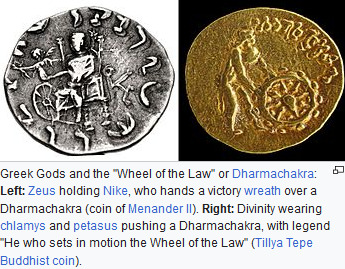
first after the conquests of alexander and once again after the expansion of the roman empire, these sorts of syncretic beliefs flourished throughout the mediterranean. if you really want to write a greek mythology story without a cast of white guys then give me Zeus-Ammon, god dammit!
anyway yeah the fact that all of hades' characters look like they're severely hydrated and their roof just caved in on them is weird and bad and other than that they're for the most part just deeply generic Greek Gods with what feels like very little care or innovation or personality put into their designs compared to characters from transistor or pyre. shomar shasberg and manly tindenstauf each have more unique visual personality than every hades character combined
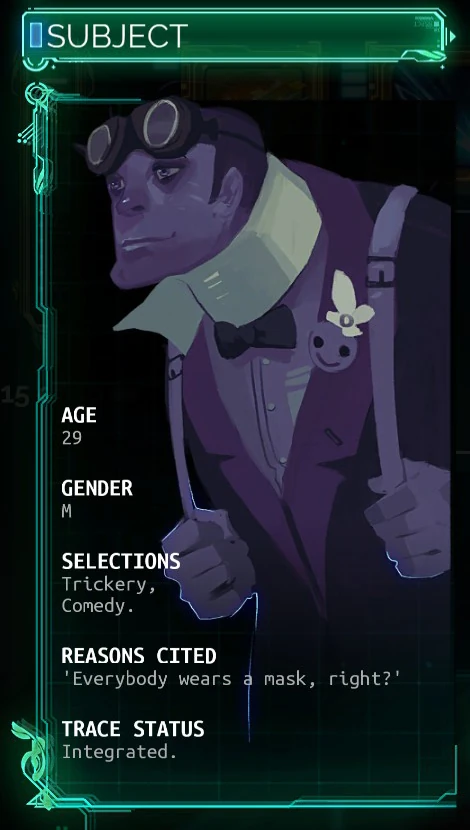
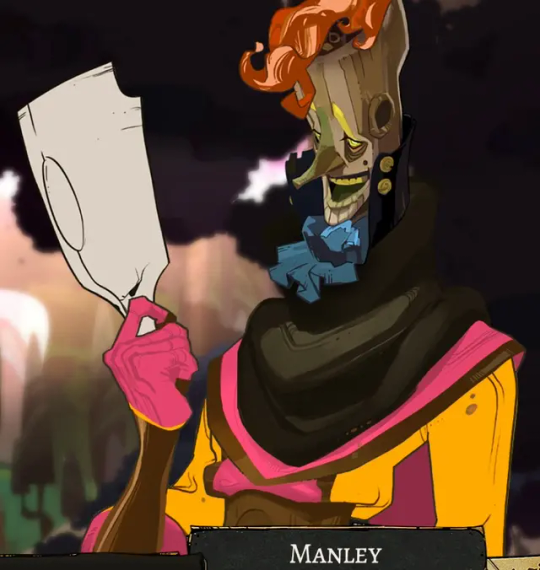
199 notes
·
View notes
Text
Video 4

| series masterlist |

The sun is setting over the jujutsu high compound, casting warm hues across the courtyard. Inside one of the quieter rooms, Y/N is setting up a small easel, your canvas ready for the first stroke. Brushes, tubes of paint, and a small ceramic bowl of water are neatly arranged beside you. Suguru is already there, sleeves rolled up, looking as if he’s about to become the next world renowned artist. His hair is a little more disheveled than usual, but the slight smirk on his face tells you he is comfortable.
“Alright, the camera is on and focused and I’m setting up my canvas for real this time. You sure you want to join me, Suguru? You’re not really the type to sit still for long”
Suguru chuckles softly, picking up a brush and dipping it into a warm shade of blue.
“It’s called expanding my horizons, Y/N. Plus, I thought you could use a little company”
You nod, smiling as you adjust your canvas, although a teasing twink appears in your bright E/C eyes.
“If we’re doing this, though, don’t turn it into a competition” you remind him, “No ‘who can paint better’ nonsense”
Suguru gives you a lazy, amused grim, clearly enjoying the thought of teasing you while painting.
“No promises” he smirks “But I’ll try my best to make something that doesn’t end in chaos”
Both of you dip your brushes into your chosen colors and start painting. But just as the two of you start getting into the flow of it—Suguru’s brush strokes deliberate and calm, yours more spontaneous and bright—a loud crash interrupts the settled peace.
The door flies open and Gojo Satoru enters with an exaggerated flourish, sunglasses on, and a pout plastered on his face.
“Hey, hey! What is this? You two started a painting party without me!” He whines, “I thought we were friends, Y/N!”
Suguru raises an eyebrow as Satoru dramatically collapses on the floor, looking up to the ceiling with a hand over his heart.
“Did you just… fall in through the door for dramatic effect?” Suguru asks.
Satoru grins widely, “I’m just adding some flair, Suguru. How else do you think I should enter? Also, where’s my invite? I thought we were the three musketeers”
You stifled a laugh, trying to focus on your work, but the camera didn’t forget to capture the small smile tugging at your lips.
“Sorry not sorry, Satoru” you say, “Didn’t think you were the type to sit still and paint. I figured you’d be too busy doing something… important, like annoying people or emptying another dessert shop”
Satoru sats up immediately, and dramatically, throwing his arms out as if wounded.
“Ouch! Is that how you see me? That hurts. I’m offended! I’m a man of taste and class, I’d totally be amazing at painting”
Suguru shakes his head with an amused smile, muttering knowingly to himself as he mixes some paint.
“You wouldn’t last five minutes without making a mess”
Satoru ignores him, “You know, I’m actually artistic. I’m like… a modern-day Picasso. Or Van Gogh—except I have my ears intact”
You turn to glance a him, skepticism on your face.
“Sure. And you’ve definitely read all kinds of art history books, right?”
Satoru winks at her playfully, “Well, I don’t read, but I’m sure I could paint circles around both of you”
Suguru rolls his eyes but, apparently done with Satoru’s antics, offers him a brush.
“Fine. If you’re so confident, you can join us” he relents, “But I’m warning you, we’re professionals here”
The three of them get to work, and immediately, Satoru begins to disrupt everything. You are trying to focus on a landscape with some subtle blending, while Suguru’s painting a more intricate figure. Meanwhile, Satoru is working on his own ‘masterpiece’, which mostly involves scribbling random, chaotic shapes with his brush, his colors clashing wildly with everyone else’s.
Satoru holds up his canvas proudly, “Look, I’m totally channeling my inner abstract genius! It’s a representation of freedom, of rebellion! What do you think?”
You stares at the chaotic mess in front of you, the blue and red clashing violently. You snort, holding back a laugh.
“You’re an actual disaster. It looks like a toddler dipped a paintbrush in a jar of chaos and went wild”
“It’s art” he states, grinning widely.
Suguru chuckles, setting his brush down for a second as he glances over.
“It’s definitely something. Not sure if it’s art, though”
Satoru sticks his tongue out at him before turning back to you, his expression suddenly shifting to something more playful. He walks over to your easel, leaning casually over your shoulder, his face close enough that you can feel the heat of his body.
“But, you know, you’re missing one thing in your painting, Y/N”
You raise an eyebrow, not sure whether you should be annoyed or entertained.
“Oh? And what’s that?”
Satoru leans in just a little closer, his voice lowering to a teasing tone.
“A little bit of me. A masterpiece can’t be complete without a dash of perfection”
You roll your eyes, but your cheeks turn a light pink against your better judgement. You can never tell if he’s being serious or just trying to get under your skin.
You grab a paintbrush, quickly flicking a spot of green paint onto Satoru’s shirt.
“There. Now it’s perfect” you smirk.
Satoru stares at the green stain, his mouth falling open in mock horror.
“You’ve ruined me. Ruined my shirt. My image. I’m a tragic artist now”
Suguru laughs from his corner of the room, shaking his head at the two of you.
“You both are insufferable. Seriously, how do you guys even manage to get anything done together?” Suguru asks.
You let out a laugh, “It’s called balance, Suguru. I paint, and Satoru provides chaos”
Satoru dramatically flops onto the floor again, spreading his arms out as if he’s defeated.
“You know, this could’ve been a perfect group activity if it weren’t for you two conspiring against my genius”
Suguru raises a brow, amused, “You are a genius—just not in the way you think you are”
After a few more hours of chaotic painting, in which a lot of paint ended up in both Satoru’s and your clothes, the three of you step back and admire each of your works.
Satoru’s piece now has a mix of random scribbles and strange shapes, while Suguru’s work is meticulously detailed, with deep serene colored forming a landscape. Yours is a bright piece, a playful interpretation of the sky, with clouds hues of purple and pink—vibrant and dreamy.
You stare at the painting for a few minutes before turning to look at yourself… covered in paint. You frown.
“Well… this was a disaster” a smile tugs at your lips, “Although, I kinda fun one”
Satoru grins, throwing a playful wink your way.
“What can I say? I bring the fun wherever I go” he brags.
Suguru shakes his head but smiles quiestly, glancing at both of them with something akin to fondness in his eyes.
“Somehow we made it out. It was fun, though I kinda wished Shoko had been here” he sighs, “Would’ve helped me deal with you two”
You send him an offended look while Satoru simply grins widely. Suddenly, Satoru pulls out his phone, snapping a picture of the three pieces.
“Perfect!” He smiles, “This is going straight into my ‘masterpieces’ collection”
“It’s not masterpieces if it’s just an album of your selfies” you remind him, amused.
“Masterpieces, Y/N, masterpieces”
Holding back a laugh, you move to grab the videocamera recording the whole process, closing it so the screen goes black.
The recording ending.
taglist: @gumiiiiezzzz @reagan707
#satoru gojo x reader#gojo x reader#gojo saturo#gojou satoru x reader#jujutsu kaisen gojo#geto suguru#gojo satoru#satoru gojo#gojo satoru x y/n#gojo satoru x you#jjk satoru#gojo satoru x reader#jujutsu gojo#jjk x reader#jujutsu kaisen#jjk gojo#jjk
47 notes
·
View notes
Text
✨ Weekly Tarot Reading ✨
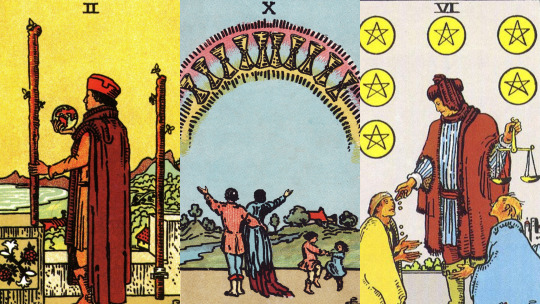
(Monday-Friday)
This week begins with a strong sense of forward momentum. Something within you that’s been quietly growing is now starting to take shape. It's not just about dreaming or abstract desires anymore—there’s a deeper clarity forming around your direction. Even if not everything is fully visible yet, you’re being invited to look ahead, to expand beyond the familiar, to widen your vision.
You're no longer in the stage of imagining—you're stepping into the phase of building. But you’re not doing this alone. At the heart of this week lies the possibility for genuine emotional harmony with those around you. Relationships can become fertile ground for your balance. Now is the time to nurture connections that truly feed your spirit—those that speak your emotional language. Peace doesn’t arrive by chance; it’s often the result of consciously choosing to understand and be understood.
Generosity is a central theme this week—not just in a material sense, but emotionally as well. Giving your attention, your care, your time to those who matter can be incredibly grounding. If you’re used to holding back for fear of losing, you may realize now that it’s in the act of giving that your true strength shines. And if you are the one needing support, this week might surprise you with unexpected help—as long as you allow yourself to ask and receive, without shame or guilt.
There is balance, there is harmony—but most of all, there is movement. Something in you is ready to grow past the limitations you’ve outgrown. This isn’t a reckless leap, but a thoughtful choice rooted in a deeper knowing of what you want to create in your life. The energy of the week speaks of cooperation, vision, and gratitude. It’s time to make space—both within and around you—for everything that has real potential to flourish.
Be ready to open the door to a gentle but determined expansion. This week, it’s not about rushing or forcing. It’s about opening your heart and hands, and allowing what you’ve nurtured with care to finally begin offering something beautiful in return.
#tarot cards#tarot#tarot reading#tarotblr#tarotcommunity#daily tarot#cartomancy#tarot deck#tarot witch#reading#tarot reader#pick a card
9 notes
·
View notes
Text
🌍🔥💨💧 Decoding Your Zodiac Nature
Ever wonder why you click with some people instantly? It might be in the elements! Discover how your zodiac's element shapes your personality
🔥 FIRE SIGNS (Aries ♈, Leo ♌, Sagittarius ♐) Spark of life, bringer of light!
Passionate and enthusiastic about life 🎭
Natural-born leaders and trailblazers 🚀
Confident and charismatic personalities ✨
Impulsive and adventure-seeking 🗺️
Creative and inspiring to others 🎨
Quick to act on ideas and desires ⚡
Warm and magnetic presence 🌟
Prone to bursts of temper, quick to forgive 💥
🌍 EARTH SIGNS (Taurus ♉, Virgo ♍, Capricorn ♑) Grounded in reality, builders of dreams!
Practical and dependable nature 🏔️
Strong work ethic and determination 💪
Sensual and appreciative of physical comforts 🍃
Patient and methodical in approach 🐢
Excellent resource managers 💼
Stable and security-oriented 🏡
Connection to nature and the physical world 🌳
Tendency towards stubbornness 🐂
💨 AIR SIGNS (Gemini ♊, Libra ♎, Aquarius ♒) Free spirits, thinkers of big ideas!
Intellectually curious and quick-witted 🧠
Excellent communicators and networkers 🗨️
Adaptable and flexible in various situations 🦋
Lovers of ideas and abstract concepts 💭
Socially oriented and people-focused 👥
Objective and fair-minded in conflicts ⚖️
Innovative and forward-thinking 🚀
Can be detached or aloof at times 🌬️
💧 WATER SIGNS (Cancer ♋, Scorpio ♏, Pisces ♓) Emotional depths, intuitive heights!
Deeply empathetic and compassionate 🤗
Intuitive and psychically attuned 🔮
Emotionally intense and passionate ❤️🔥
Creative and artistic souls 🎭
Nurturing and protective of loved ones 🛡️
Ability to "read" others effortlessly 📖
Healing presence for those in pain 🌊
Can be moody or oversensitive 🌙
🌈 ELEMENT INTERACTIONS 🌈
Fire + Air = Inspiration and excitement 💡
Earth + Water = Growth and nourishment 🌱
Fire + Earth = Productive energy and manifestation 🏆
Air + Water = Emotional understanding and expression 💌
Fire + Water = Passionate intensity, potential conflict 🌋
Earth + Air = Practical ideas brought to life 🏗️
💫 BALANCING YOUR ELEMENTS 💫
Fire needs Air to spread but Water to temper
Earth needs Water to flourish but Air to adapt
Air needs Fire for passion but Earth for grounding
Water needs Earth for form but Fire for motivation
Which element resonates with you most? Remember, we all have a bit of each element in our charts! Understanding your elemental nature can help you harness your strengths and balance your challenges.
Tag your element tribe! 🔥🌍💨💧
Share/Reblog Like our content? - Give us a Follow
47 notes
·
View notes
Text
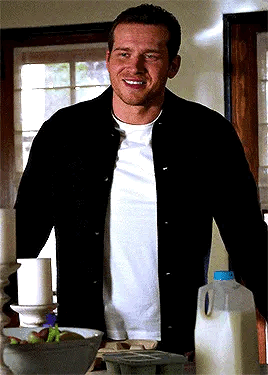


Oliver star is Max Carter
Lou Ferrigno jr is Lukas
Dan Stevens is Ethan
Title: The Suit of Shadows
Max Carter was a muscle-bound titan, a national champion bodybuilder known for his impressive physique and shimmering trophies. Yet, behind the glory and muscle, loneliness lingered like a shadow. His life revolved around the gym and the weights, but a yearning for connection gnawed at him—a desire for love, for partnership, and perhaps even for someone who could truly see him beyond the iron and flesh.
One night, exhausted from another grueling day of training, Max returned to his small studio apartment and found a peculiar package awaiting him. It was a small, unmarked box wrapped in shimmering silver paper. Curiosity piqued, he tore it open and found a sleek, skin-tight bodysuit that seemed to pulse with a life of its own. The suit was unlike anything he’d ever seen—a perfect replication of his own muscular form, complete with intricate detailing that showcased every sinew and curve of his body.
Intrigued and amused, Max thought it might be a fun way to prank his friends or even test it out as a Halloween costume. He slipped it on, marveling at how it hugged his body perfectly—too perfectly. Yet, as the final zipper slid into place, a wave of dizziness washed over him.
Before he could comprehend what was happening, a surge of energy coursed through his veins, and Max’s vision blurred. The world spun, and when it cleared, he found himself trapped—his consciousness hovering within the bodysuit while a figure stood before the mirror, admiring himself.
The figure wore Max’s own face, his own body, but it was cloaked in a different spirit. This was Ethan, a former competitor who had always burned with jealousy and envy toward Max. Ethan transformed into the bodysuit like a snake shedding its skin, embodying Max completely.
Inside the bodysuit, Max felt powerless, a spectator to his own life. The sensation of muscles flexing, powerful arms lifting weights, and the attention from admirers engulfed him, but it was all under Ethan’s control. Max desperately tried to scream, to shout, to reclaim his life, but his voice was silenced in the darkness.
Weeks passed, and Max watched as Ethan became a celebrity. Gaining notoriety for “this new sculpted physique,” he skillfully maneuvered through public appearances and competitions, a puppet master flourishing under the spotlight. But as the days turned into weeks, things began to shift.
Ethan started to lose himself in the life of a champion. The allure of fame dulled his envy, and he found himself captivated by the people Max used to call friends—forged bonds that went deeper than muscle and competition. Among them was Lukas, an art student with a kind heart and a warm smile that had always made Max’s heart race. Lukas had never seen the true Max, the man behind the body—the one who longed for love but couldn’t find it.
One evening, Ethan attended a gallery showing showcasing Lukas's work, a charming collection that merged the human form with ethereal beauty. As Ethan sauntered around the exhibit, he could feel populations of admiration flooding towards him, yet he was drawn to a painting of swirling colors and abstract shapes that personified strength and vulnerability all at once.
In the depths of this quiet moment, a thrum of connection sparked within Ethan. Could it be that Max’s spirit still lingered within this suit? The suit pulsed with a warmth that felt strangely like longing. Ethan took a moment to absorb the canvas, feeling an emotion bubbling up—regret for everything he had stolen. He realized that beneath the layers of jealousy, he envied Max for more than the accolades; it was the love he experienced but never embraced.
In that instant, something the bodysuit could not contain began to shift. The bond between souls started to intertwine—Max’s spirit surged, igniting a fierce push for truth and authenticity. Inside that bodysuit, a desperate fight ensued—both souls yearning for liberation and understanding. Under the celestial light of the gallery, they began to meld, creating something spectacular.
Ethan, now filled with a new resolve, found himself drawn toward Lukas, who illuminated the exhibition with his passion. “Can you see me?” he asked Lukas, voicing a question that echoed from Max’s soul.
“Yes,” Lukas replied, eyes wide with wonder, sensing a depth that resonated beyond any physique. “You’re breathtaking.”
In that moment, Max realized what true strength was; it was vulnerability, connection, and love. Together, he and Ethan forged a fragile truce, each slowly growing to understand the other. Days turned to nights as Lukas’s presence ignited a yearning Maxim never believed he could have—hands connected, laughs exchanged, and hearts opened.
As the bond deepened, the enchantment of the bodysuit began to crack. In a moment of unity during a climactic bodybuilding competition, Max and Ethan harnessed their combined energies—Ethan, fueled by Max’s desire to be truly seen; Max, empowered by Ethan’s sense of redemption. They wished for freedom, and in an explosion of light, the bodysuit shattered.
Ethan collapsed, and suddenly there was Max—alive and panting, anew and transformed. He looked around, meeting Lukas’s gaze with urgency.
“What happened?” Lukas whispered, amazed.
Max smiled, realizing how different he felt, how he was no longer just muscles but a man with profound dreams. They embraced, a moment of connection that solidified everything he had fought for.
In the aftermath, Max and Lukas carved out a relationship where strength meant more than just brawn; it was about partnership, mutual support, and unending love. They both had faced demons in their own ways, emerging from shadows into light, culminating in a transformation that no bodysuit could ever contain.
Max learned to love not just his physique but himself—body, heart, and soul. And beside him stood Lukas, with whom he would continue to explore the beauty of life, the essence of love, and the enduring power of connection.
19 notes
·
View notes
Text
I know the fandom loves throwing ideas around for a hypothetical adaptation, so why not chime in.
I think most of us agree that an animated series would be better than the dreaded life-action adaptation. Regardless of format, any adaptation would have to somehow preserve the peculiarities, the absolute whiplash, and way the narration shapes the narrative. In my opinion, an animated series could do this quite well.
We start off with Gideon the Ninth. It's shown in heavily stylized 3d animation (think, at least Arcane-style), with strong contrasts in the colors. The Ninth house is dark and desaturated, the lights in the eyes of animated skeletons and Gideon's hair positively burn among the dreary surroundings. Then, getting to the First, the world is vibrant and bright, lots of elaborate light refractions in the broken windows of Canaan house.
Characters are accompanied not only by small, individual musical themes, but also by visual clues. Each house might have distinct little particles and effects that appear in scenes in which the respective characters act. They might synergize in scenes where characters cooperate or contrast in scenes in which they fight. (example: the Niners are always accompanied by shadows, ink-blots staining the scenery around them. The Third are too graceful to be real, all of their animations use exaggerated smear-frames in overly grandiose flourishes. When Naberius fights Gideon, his strikes stir the shadows around Gideon, cleaving bright rifts into the inkstained dark.)
The story is told as we know it, without reordering or large ommissions. One thing we see not nearly often enough in modern television is actual narration in the background. We don't need it for all of the visuals and happenings, but so much of gtn profits from Gideon's thoughts and feelings.
A few scenes look differently though. When Gideon allows Harrow to take over her vision, the animation style changes. It gets a bit more abstract, the surroundings are textured like oil paintings, and Gideon herself has trails of smoke and ink following her movements. This is how they see the world together, and it is reflected again at the very end of the first book, when Harrow ascends. Except this time there's no borrowing, it's something deeper. The world is painted, more abstractly this time, and the characters appear almost like paper cuts.
And then the fun begins. We leave gtn and start htn. There is no more Gideon in our narrative, and yet there is her narration. As in the first series we retain parts of the narration, and it is her voice - mostly. Now, this is a source of great confusion in the book, right? The series would have to make it explicit that it is her voice, but it can have fun with it nevertheless. Some words are garbled, overlapping, distorted. Sometimes, Harrow's voice seamlessly takes over the narration, drifting in and continuing, while still using Gideon's pronunciation and vocal flow.
The visuals, on the other hand - now, that's an entirely different thing. At this point we know what the world looks like when Gideon sees it and what it looks like when they see it together. htn gives us two exciting new variations: 'Harrow with very little Gideon' for the Mithraeum story, and 'Harrow entirely without Gideon' for the river bubble. In the main, physical-world story we retain broad strokes of thick oil paint for the world around Harrow. The characters are too clean on a messy background, with some of the paint steadily bleeding into their shapes. The paint seems almost like it is an active participant in the narrative, crawling across inconvenient truths to blot them out, staining everyone but keeping it's distant from John, who therefore remains clearer than clear, shiny and bright, squeaky clean and lemon scented. But then there's the river bubble, and we get full Harrow, with a teeny bit of Wake. The scenery around the characters is vague and misty, swathes of color arrange into a distorted background like ink being poured into water. The entire scenery bleeds color and light into the surroundings of dark, barely saturated characters. It breaks at the seams when the uncomfortably realistic fleshy pipes wind through the walls, something too concrete for a tearstained world.
Towards the final act, we see a few changes: Abigail summons Nonius, and the shape language changes. Everything's still illustrated the way it was before, but the stark, desaturated characters in his proximity stop being mere dark blots in this scenery, and instead become almost comic-like. Their strikes and attacks are supported by respective action lines, their poses and moves adapt to the newly imposed genre conventions. Meanwhile, on the Mithraeum, Gideon is keeping the fires burning. We're almost back to the way we used to see the world in the beginning, Gideon's stark contrast and smooth environments. But there's the ink bleeding into the scenery from dark corners and bright red puddles, there's enough of Harrow here to stain the world.
And, well. We get to Nona. And Nona's world fundamentally isn't like the one the other's see. Nona's world is mismatched and chaotic and charmingly odd. Most of it is claymation, interspersed with some other materials. Cam's swords are real metal, the dust of New Rho fills the air, and most of the food is probably actual food that looks as dreadfully out of place in this world as it feels in Nona's mouth. There remains a touch of Harrow, expressive movements are exaggerated with her flowing ink, action lines like calligraphy. Of course, there are also the John chapters. Here, we get to have proper fun with the visuals. Let's recap: it's Harrow getting to experience a memory of Alecto, narrated by John. We already know Harrow's flowing colors that stain the backgrounds, and we get mixed medium animation with it: articulated plastic dolls, of course, with some natural materials (moss, wood, some metal scraps) as set dressing.
I'm still not entirely settled on the Nona Epilogue. As long as Alecto isn't out I'm not sure whether I want to keep in line with something from the next book, or whether it's its own thing. Until we know more: illuminated manuscript.
---
Well, that was more than I originally intended to write, but I've had those thoughts in my head basically since I've started the books, and they needed an outlet. There's plenty more ideas where those came from, please please talk to me. 'The Unwanted Guest' as an actual play, anyone? (When Cam makes contact with Babs, and the fight initiates, the camera zooms out from the now frozen claymation, revealing it's situated on a table in the front row of a theatre hall BTW)
#the locked tomb#tlt#Gideon the Ninth spoilers#Harrow the Ninth spoilers#Nona the Ninth spoilers#I could keep talking for hours. Anyone want a full concept for the soundtrack?#just tell me
75 notes
·
View notes
Text
The Eternal Thread: Embracing Humanity, Nature, and the Future
As we stand at the crossroads of tradition and modernity, it’s impossible to ignore the delicate thread that binds us all—a thread woven through our genes, our experiences, our very essence. This thread connects us not only to our ancestors but to the generations that will follow, the ones who will inherit the world we build today. It ties us to the land, to nature, and to every living being with whom we share this fragile planet. In our veins flows the legacy of millions of years of evolution, a reminder that we are not solitary beings but part of an intricate web of life that stretches far beyond the limits of our individual existence. The question is not whether we are linked, but how we choose to honor that connection.
In the quiet recesses of our hearts and minds, there lies an innate inclination—a tendency to seek meaning, to belong, and to make sense of the world around us. Some may call it instinct, others might call it destiny, but whatever the name, it is undeniable. We are born with this drive, not just to survive, but to flourish. And as we look around at the world we’ve inherited, we must ask: Are we flourishing, or are we allowing that thread to unravel? Are we nurturing the bonds that connect us to each other and to the earth, or are we severing them with every careless act of destruction or indifference?
The Future of Our World: A Generational Challenge
It is the generations before us who shaped the foundations on which we stand today. The choices they made—good and bad—created the world we now inherit. And it is our turn now to choose. The generations to come will look back on us, just as we look back on our predecessors. Will they thank us for the progress we made, or will they curse the damage we did? The responsibility we bear is enormous, but it is also deeply empowering. We have the power to shift the course of history. We have the opportunity to heal the wounds inflicted upon our planet, our societies, and our hearts. This is a generational challenge, a moment in time where our collective actions will shape the trajectory of humanity for centuries to come.
Yet, while we think of this responsibility, we must not forget our individuality. The unique traits that define us are not mere accidents of biology or genetics. Each of us, in our complexities, embodies a facet of what it means to be human. We are unique not only because of the bloodlines that run through our veins but because of the choices we make. It is our individuality that allows us to contribute something of value to the whole, to be part of a greater collective effort while still maintaining our distinct voices, our personal stories, our contributions.
The Sanctity of Nature: A Shared Duty
But individuality does not exist in isolation. It is tied to something much larger—the natural world that sustains us. The air we breathe, the water we drink, the soil that nourishes us—they are not separate from us, they are part of us. The destruction of nature, the mass extinction of species, the contamination of the very resources we rely on—these are not abstract problems; they are our problems. The biodiversity of our planet is not a luxury we can choose to preserve or disregard—it is the very foundation of our survival.
As we fight for freedom, justice, and equality, let us not forget that these are intertwined with the health of our planet. The fight for the rights of marginalized people, the fight for social equality, the fight for gender liberation—these fights are all deeply connected to the fight for environmental justice. A planet suffering from pollution, from ecological collapse, from exploitation, is one where true freedom and equality cannot exist. To preserve humanity, we must also preserve nature. And to preserve nature, we must fight against apathy, against indifference, and against the systems that prioritize profit over planet and people.
Unity, Love, and Human Connection
In the struggle for justice, there is no place for hate. Hate, in all its forms—whether racial, religious, or personal—destroys the bonds that tie us together. Hate breeds division, fear, and violence, and it is antithetical to the very essence of what it means to be human. We are creatures built for connection, for empathy, for love. Our hearts beat in rhythm with one another, our souls intertwined in ways we often fail to understand. But when we choose love, when we choose understanding, when we choose empathy, we allow those connections to grow stronger.
Love is not just a feeling—it is a force, a power that transcends boundaries, defies hatred, and unites us across time and space. It is through love that we can find the courage to fight for justice, the wisdom to stand for truth, and the compassion to extend our hands to those in need. It is love that binds families, that builds communities, that sustains societies. It is love that pushes us to protect the vulnerable, to fight for the oppressed, and to create a world where all can live in dignity.
Truth, Justice, and Equality: The Pillars of a Better Future
Justice is the pillar upon which freedom stands, and it is not something that can be granted or taken away—it must be fought for, every day, by each of us. True justice is not just the absence of oppression, but the active pursuit of equality for all people, regardless of their race, gender, sexual identity, or social status. It is the creation of systems that provide not just opportunity, but the means to succeed, to thrive, to contribute. It is the recognition that each person, each community, has inherent value, and that we must work to dismantle the structures of inequality that have existed for too long.
But justice alone is not enough. It must be rooted in truth. The truth of our shared history, the truth of our shared humanity. We must acknowledge the injustices of the past, no matter how uncomfortable they may be, in order to heal and build a better future. Truth requires humility—the humility to recognize that we are all flawed, that we all have room to grow, to learn, to evolve.
The Call for Self-Acceptance and Collective Growth
In the pursuit of justice, we must also look inward. To be truly free, we must first accept ourselves—our unique identities, our complex emotions, and our limitless potential. Self-acceptance is not a luxury; it is a necessity. It is only when we accept ourselves that we can begin to accept others, to respect their differences, and to build a world where diversity is not just tolerated but celebrated.
And as we work to create a world that is more just, more equitable, more compassionate, we must also embrace the power of collective growth. We are not isolated beings. Our actions have consequences, and our collective efforts have the power to change the world. The future we build, the world we leave behind, is not only the product of our individual actions but of our collective commitment to each other and to the planet.
The Future: A Tapestry of Freedom, Justice, and Unity
So, what will the future hold? Will it be a world where freedom reigns, where justice is a reality, and where every person is valued for their unique worth? Will it be a world where we honor the delicate balance of nature, where we live in harmony with the earth, not at its expense? Will it be a world where hate has no place, where love and understanding are the foundation of all relationships?
The answer is not found in the distant future. It is found in the choices we make today, in the way we treat one another, in the way we care for our planet, and in the way we honor our shared humanity. The thread that connects us is strong, but it is fragile. It must be nurtured, protected, and woven with care. The future we create is the one we choose to build. And that choice is ours.
3 notes
·
View notes
Text








Heather Gwen Martin (b.1977, Saskatoon, Canada) is a painter based in Los Angeles. The colorus are hot and bright, nearing hard edge abstraction while maintaining the mark of the hand. Each shape is poetic, with flourishes of elegant movement akin to dancing.
Martin mixes her paint colors by hand, and the unique tones play off each other in astonishing ways. Certain shades of color can only be seen in person, and encourage the viewer to move around the work, changing their physical relationship to the surface of the painting.
Heather Gwen Martin studied at the University of California, San Diego and The School of the Art Institute of Chicago.
17 notes
·
View notes